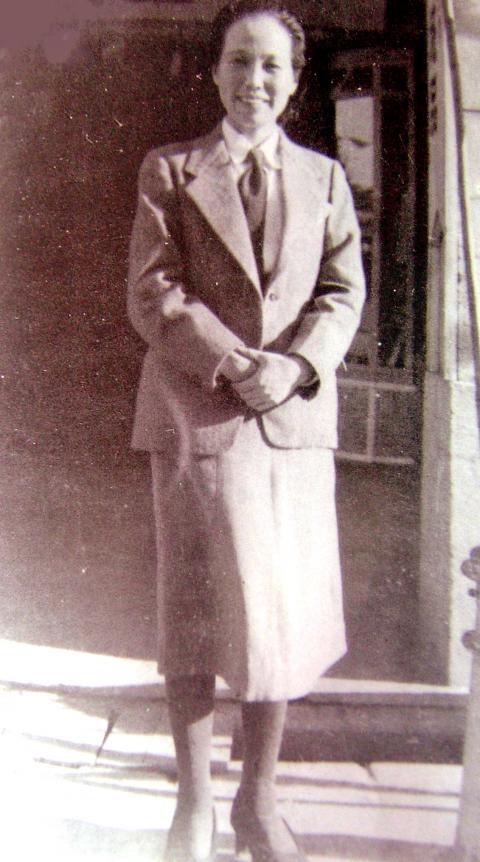Taiwan in Time: Oct. 3 to Oct. 9
In May of 1968, Hsieh Hsueh-hung (謝雪紅) was held down by two red guards who forced her to bow her head and admit her wrongdoings. Two years later, before she died in Beijing, she wrote in her will, “I’m not a rightist. I support the Communist Party and socialism.”
Ironically, under the two previous regimes, she was persecuted for being a leftist and served eight years in jail during Japanese rule. She fled to China after leading an armed resistance against Chinese Nationalist Party (KMT) troops during the violent suppression of the 228 Incident.

Photo Courtesy of Wikimedia Commons
Hsieh was born in 1901 to a poor family in Changhua County. At six years old, she would have to hawk bananas in the street and started working in a factory at age 10. When she was 12, she was adopted into a family in Taichung to be their son’s future wife. She ran away due to severe abuse and in 1918 married Chang Shu-min (張樹敏), with whom she traveled to Japan, where she witnessed the “Taisho democracy” period and the aftermath of the rice riots. That was her first time seeing the poor rise up against the wealthy.
Later, they moved to China, where Hsieh’s thinking was further influenced by the May Fourth Movement, a student-led protest against the government. After learning that she was Chang’s concubine, she left him and found a job teaching people how to use sewing machines. She also learned how to read and eventually became involved with Chiang Wei-shui’s (蔣渭水) Taiwan Cultural Association (台灣文化協會), which aimed to passively counter Japanese rule by fostering an awareness of Taiwanese nationalism.
Due to her painful past, she also started championing women’s rights and established herself as an independent woman who ran her own clothing shop. Later, she traveled to China again and enrolled in Shanghai University as a sociology major — the first time she received any type of formal education. During this time, she participated in the May Thirtieth Movement, a labor and anti-imperialist protest that culminated in bloodshed.
JOINING THE CAUSE
Her actions caught the attention of the Chinese Communist Party, who convinced her to join and sent her to further her studies in Moscow. Hsieh was persuaded by the Communist International, an organization to promote communism around the globe, to eventually return to Taiwan and further their cause.
In 1927, she returned to Shanghai to help form the short-lived Taiwanese Communist Party. In addition to the standard communist values, the party also called for an independent Taiwan and denounced Japanese rule as well as emphasizing women’s rights.
Hsieh was soon arrested with several others after the party’s anti-Japanese fliers were discovered by the Japanese police and deported back to Taiwan. After being acquitted, party activities continued under Hsieh’s leadership, eventually taking control of the Taiwanese Peasants’ Union (台灣農民組合) and even trained farmers for an armed rebellion, which never took place.
Hsieh also managed to take control of the Taiwan Cultural Association, turning it into an openly leftist organization. She did the same with Chiang’s Taiwan People’s Party, which by 1931 also had become leftist. During this time, she continued to call for Taiwanese independence.
The group eventually split into factions due to differences in ideology, with Hsieh supporting a Taiwanese identity and involving the bourgeoisie in the revolution, while others were pro-China and called for straight up class struggle. Hsieh was forced out of the party in 1931, and later that year she was arrested in a mass raid of Taiwanese communists and sentenced to 13 years in jail.
In 1939, Hsieh was released due to tuberculosis. She tried to resume her mission, but this was Japan’s expansionist period and all political activities had been banned.
TAIWANESE AUTONOMY
After KMT forces arrived in 1945, Hsieh organized in early October the Taiwan People’s Association (台灣人民協會) along with a number of other leftist organizations, which were eventually forcefully disbanded by the government.
She continued to call for political autonomy for Taiwan, calling for popular elections from governor to township mayor.
“Taiwan must be ruled by Taiwanese,” she declared.
After the 228 Incident broke out, Hsieh was named leader of the resistance in Taichung. They denounced the government’s actions, called for democracy and disarmed the local police. The next day, Hsieh issued a call to arms, stating that Taiwanese should declare war against the dictatorship while warning people not to hurt the recent arrivals from China and not to destroy property.
The resistance eventually failed, and Hsieh fled to Xiamen on March 21, never to return to Taiwan again. During the Anti-Rightist Movement of 1957, she was painted as a rightist partially due to her insistence on Taiwanese political autonomy, and she was purged repeatedly during the Cultural Revolution. She died in 1970, and was not rehabilitated by the party until 1986.
Taiwan in Time, a column about Taiwan’s history that is published every Sunday, spotlights important or interesting events around the nation that have anniversaries this week.

Many people noticed the flood of pro-China propaganda across a number of venues in recent weeks that looks like a coordinated assault on US Taiwan policy. It does look like an effort intended to influence the US before the meeting between US President Donald Trump and Chinese dictator Xi Jinping (習近平) over the weekend. Jennifer Kavanagh’s piece in the New York Times in September appears to be the opening strike of the current campaign. She followed up last week in the Lowy Interpreter, blaming the US for causing the PRC to escalate in the Philippines and Taiwan, saying that as

Taiwan can often feel woefully behind on global trends, from fashion to food, and influences can sometimes feel like the last on the metaphorical bandwagon. In the West, suddenly every burger is being smashed and honey has become “hot” and we’re all drinking orange wine. But it took a good while for a smash burger in Taipei to come across my radar. For the uninitiated, a smash burger is, well, a normal burger patty but smashed flat. Originally, I didn’t understand. Surely the best part of a burger is the thick patty with all the juiciness of the beef, the

This year’s Miss Universe in Thailand has been marred by ugly drama, with allegations of an insult to a beauty queen’s intellect, a walkout by pageant contestants and a tearful tantrum by the host. More than 120 women from across the world have gathered in Thailand, vying to be crowned Miss Universe in a contest considered one of the “big four” of global beauty pageants. But the runup has been dominated by the off-stage antics of the coiffed contestants and their Thai hosts, escalating into a feminist firestorm drawing the attention of Mexico’s president. On Tuesday, Mexican delegate Fatima Bosch staged a

Would you eat lab-grown chocolate? I requested a sample from California Cultured, a Sacramento-based company. Its chocolate, not yet commercially available, is made with techniques that have previously been used to synthesize other bioactive products like certain plant-derived pharmaceuticals for commercial sale. A few days later, it arrives. The morsel, barely bigger than a coffee bean, is supposed to be the flavor equivalent of a 70 percent to 80 percent dark chocolate. I tear open its sealed packet and a chocolatey aroma escapes — so far, so good. I pop it in my mouth. Slightly waxy and distinctly bitter, it boasts those bright,